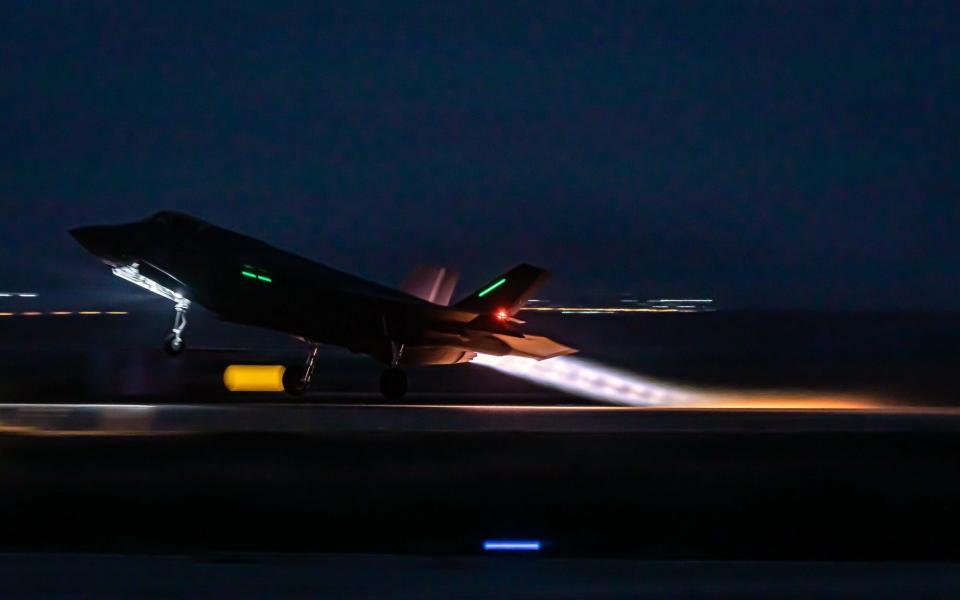Extraordinary footage appeared to capture Israel shooting down a ballistic missile outside of the Earth’s atmosphere as it deployed its most advanced defences against Iranian drones and rockets.
Images showing what is thought to be an “exoatmospheric” interception were among visuals circulated on Sunday morning following the unprecedented barrage of missiles fired directly at Israel from Iran for the first time.
One Israeli official described the country’s response as “the most complex air defence events recorded”, according to Kan, the Israeli public broadcaster.
Israel claims it shot down – with the help of the US and the RAF – 99 per cent of the more than 330 drones, cruise and ballistic missiles fired from Iran.
According to the army, Iran launched 30 cruise missiles, 120 ballistic missiles and 170 drones. The attacks were launched from Iran, Iraq, Yemen and Lebanon, marking the most serious multi-front attack against Israel in decades.
At least one of the ballistic missiles was shot down by the Arrow Weapon System (AWS) which is the world’s first operational, national, stand-alone ATBM (Anti Tactical Ballistic Missiles) defence system.
The Arrow 3 is the latest and most advanced system, with an exoatmospheric hypersonic anti-ballistic missile to shoot out targets that are due to drop on a target from outside the Earth’s atmosphere.
Israel also deployed its famous Iron Dome missile system, the most well-known. It has protected Israel against rockets from Hamas, Islamic Jihad and Hezbollah since it became operational in 2011.
It also used David’s Sling, which became operational in 2017 and protects against large-calibre rockets, short-range ballistic missiles, cruise missiles, aircraft and drones.
Very unique footage showing an exoatmospheric interception amid the Iranian ballistic missile attack, likely by the Arrow 3 air defense system. pic.twitter.com/wrZNCV01tn
— Emanuel (Mannie) Fabian (@manniefabian) April 14, 2024
Combined, this umbrella of missile defence systems has protected Israel against incoming missiles, drones and rockets since October 7.
According to Giora Eiland, former head of the Israeli National Security Council, the missile defence system is but one of many important elements which contributed to the unprecedented success in shooting down the missiles and drones from Iran.
Eiland told The Telegraph how Israel, the UAE, Jordan, US and Saudi Arabia worked on establishing one large command and control system between them a little over four years ago, following a large drone attack on Saudi oil facilities. Israel was deeply engaged in secret negotiations with Gulf states at the time to normalise ties, after years of covert cooperation.
Eiland described how the control system works: “If something is detected in Jordan or Saudi Arabia it’s automatically transferred to Israel and the US Centcom. So we have one picture of the Middle East. That is very important because it also reflects a strategic cooperation that was totally ignored in the past six months due to the dispute over Gaza.”
“And now, because of this attack, all the relevant parties returned to work together and shared information in real-time. It looks as if the command and control system, which is very complicated, worked very well,” Eiland added.
While the IDF is yet to release data on exactly which types of cruise and ballistic missiles were fired at Israel, and from where, Eiland said that a fair assumption to make is that many of the drones and cruise missiles were shot down by Israeli F-35 fighter jets.
“The fact that you can begin the engagement far from Israel’s borders is one of the reasons why the result was so good. So even if you miss, you have another shot at shooting them down again. And if that fails, you have the missile defence system in Israel,” he said.
Eiland’s assessment correlates with a report by Reuters on Sunday, saying most of the drones flying over Syria’s airspace were downed by Israeli and US jets, citing two Western intelligence sources.
The former national security chief added that he wasn’t surprised with the success rate, but that it isn’t easy to detect cruise missiles at night due to their high speed, low altitude and ability to manoeuvre between mountains.

As for the 120 ballistic missiles, Eiland pointed at two challenges in shooting them down, one of which he said he couldn’t disclose.
“Because a fighter jet can’t down a ballistic missile, you are left with one shot; the Arrow missile defence system. And that limits your options,” he said.
The US and Jordan also deserve praise for their abilities to stop Iran’s attack, Eiland said.
“I know of course that Jordan has advanced radars as well as air-to-air missiles and F-16 fighter jets, which are capable of shooting down drones but I didn’t know if the Jordanian pilots could operate effectively at night. And they proved that they can. That’s quite promising.”
“The main US contribution is intelligence, in particular their prediction about what would happen and, of course, sharing it. It was extremely precise.”
Source Agencies
